Northern Greece
Late May 2018
In 2007 we commissioned Greece's first aluminum skiff to be used exclusively for electrofishing in deep inland waters. Now just over a decade later we return to the rivers in the first stage of a 6 year river EU WFD monitoring project. These are the first three sites sampled this year.
- The Laspias River, in Thrace
- The Mega River, Tributary of the Pinios, Thessaly
- The Pinios, downstream of the Enipeas confluence, Thessaly.
Just some shots of the first team expedition and part of the 'training session' that took place a few weeks ago.
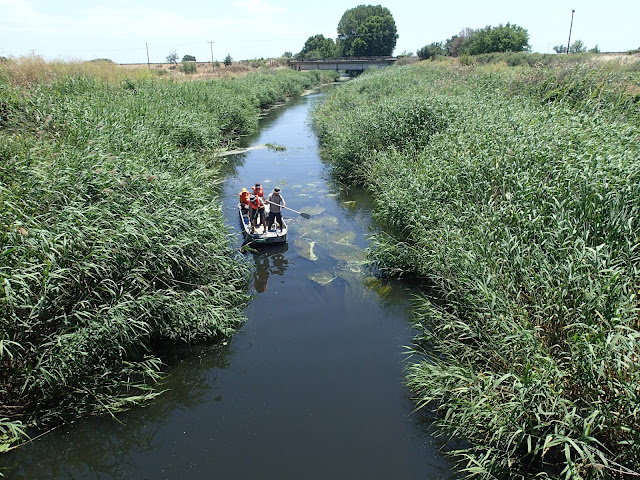 |
| The Laspias River in Western Thrace (near Avdira), poorly known and very polluted. (Laspias = "Muddy", formerly known as the Dolmuz Orman or Wild boar Forest). |
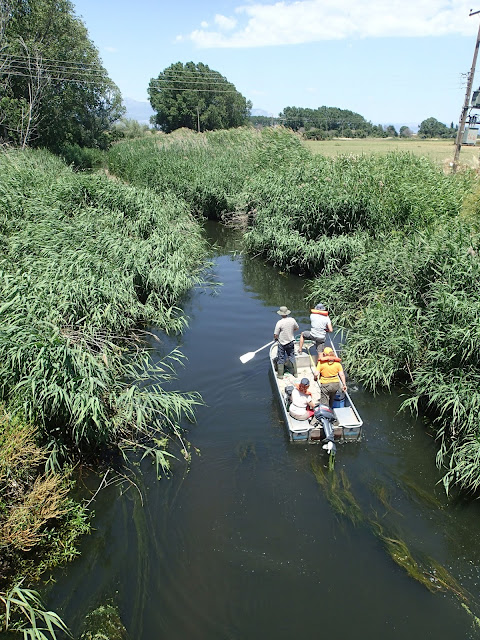 |
| Laspias River. |
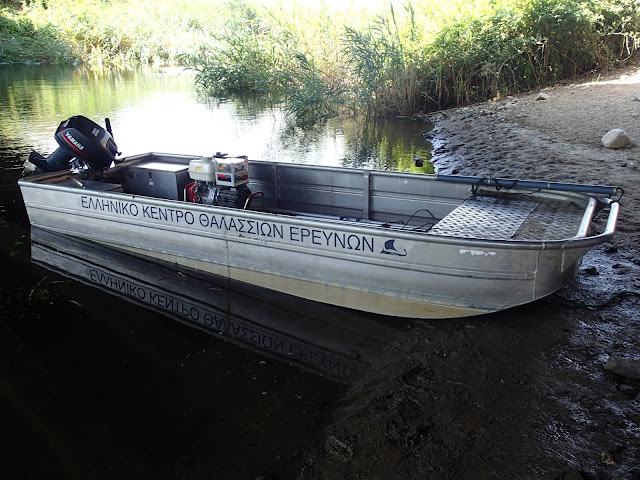 |
| Found a nice place to launch boat under the highway bridge, Laspias River. |
 |
| Access is always a challenge; Laspias River. |
 |
| Laspias River: No fish makes us happy too. We where amazed, expecting 7 species...Its a sign of sever degradation no doubt. |
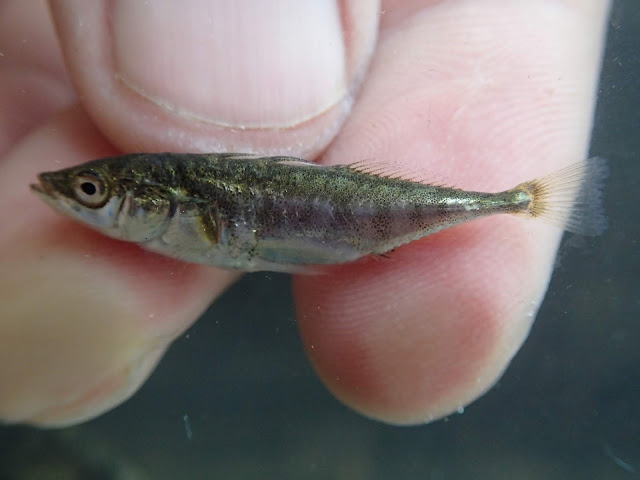 |
| Laspias River: Just a single Gasterosteus gymnurus (=aculeatus) found. A fish that does migrate up and down the river, finding non-polluted spots, but surviving also in polluted and brackish waters. |
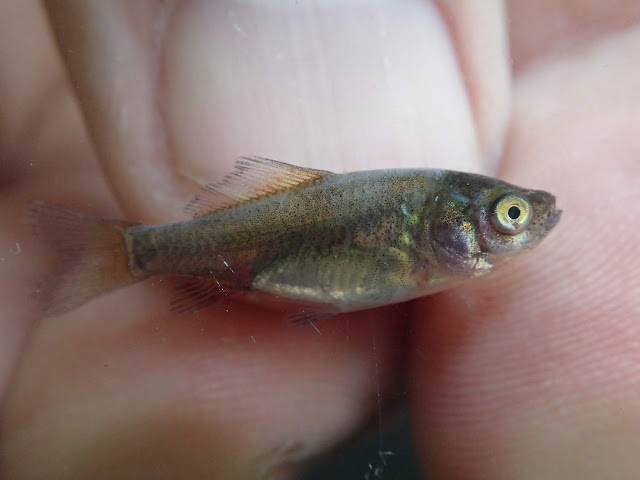 |
| Laspias River: One of the most tolerant fishes to pollution and anthropogenic change in running waters, a fry of Carassius gibellio (about 25 mm TL). |
 |
| Laspias River: The Cobitid loaches also survive well in really polluted conditions, this is Cobitis strumicae. |
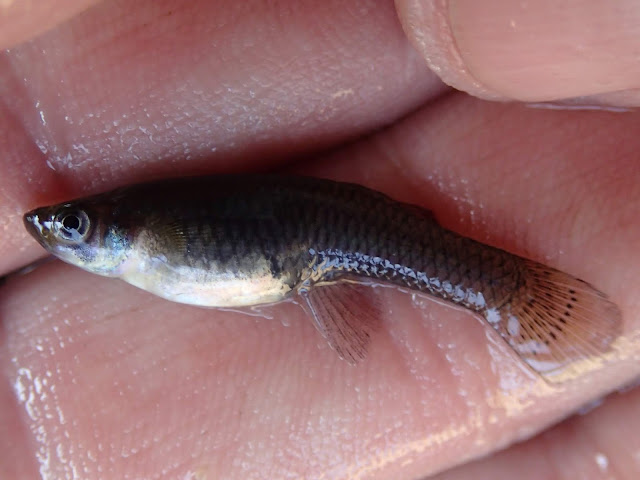 |
| Laspias River: And a fish that can survive anyting, salt water, really polluted eutrophic conditions, low oxygen, whatever...Eastern Mosquitofish Gambusia hollbrooki. |
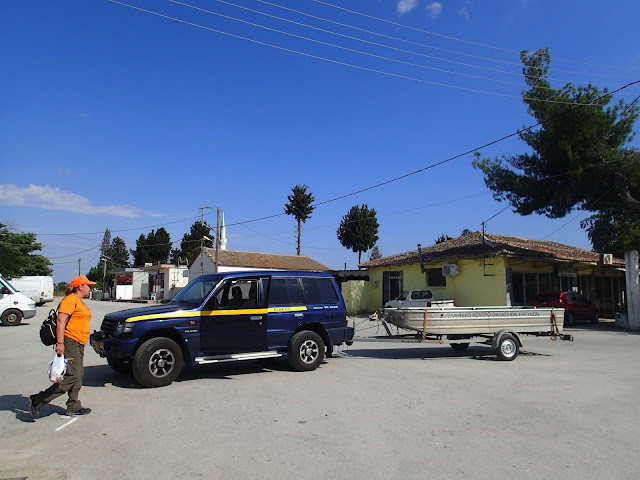 |
| Getting groceries from a small mixed Muslim-Christian village near the Nestos River (I think its the village of Evlalos). Roberta Barbieri is driving HCMR's 1999 huge Pajero jeep trailing the electrofishing skiff. |
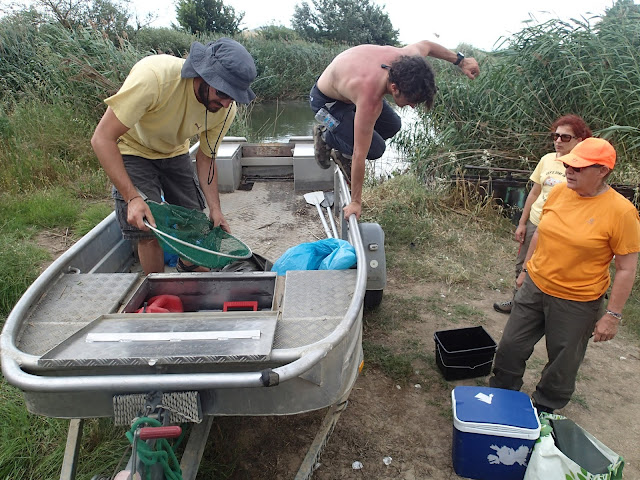 |
| Mega River in Thessaly. Found new landing site, Mega2 we are calling it. |
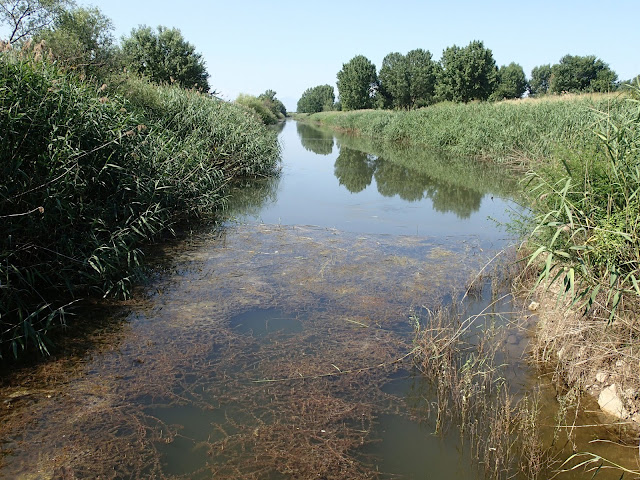 |
| Mega River, a totally channelized and straightened weir-dominated lowland canal (actually a river, and definitely heavily modified). |
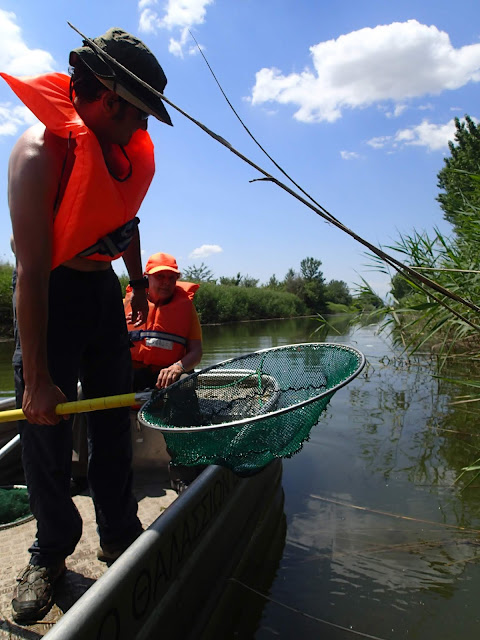 |
| Dimitris Kommatas and Roberta Barbieri - our teachers during the training session. |
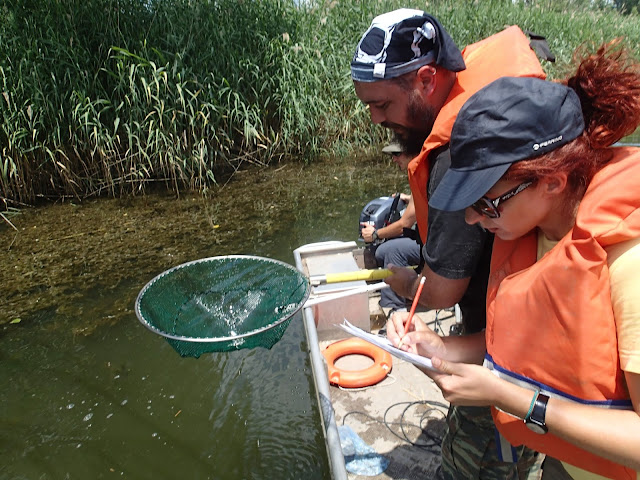 |
| Mega River: Long-time expert with the 50 kg electro-generator, Nick Koutsikos with newly contracted Maria Hamoglou (of Lake Karla fame)- on the job. |
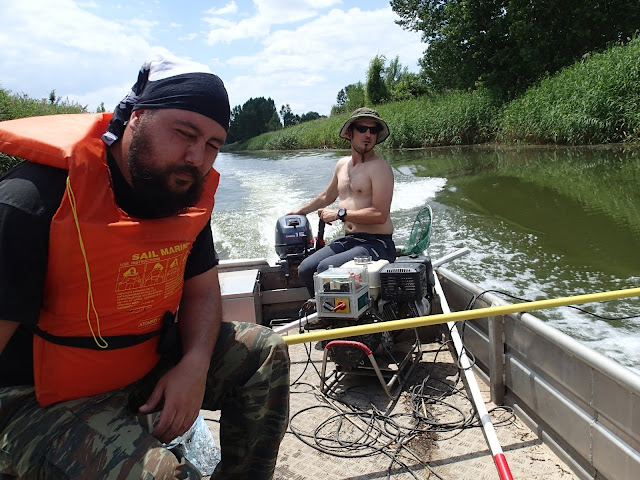 |
| Mega River: Moving fast among training trials along Mega2. |
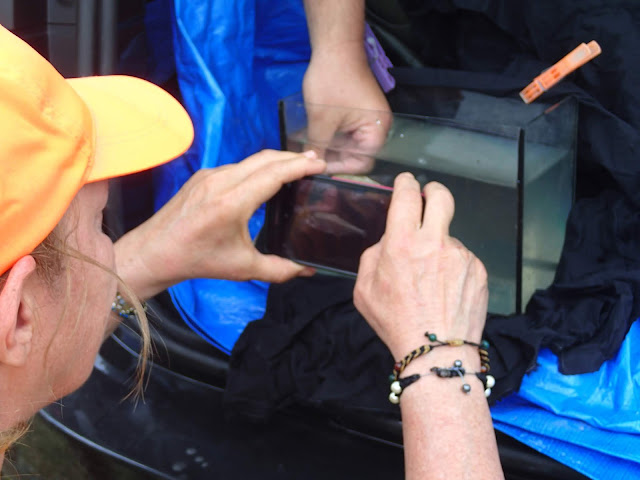 |
| Mega River: Quick set-up to photograph fishes by Roberta Barbieri. |
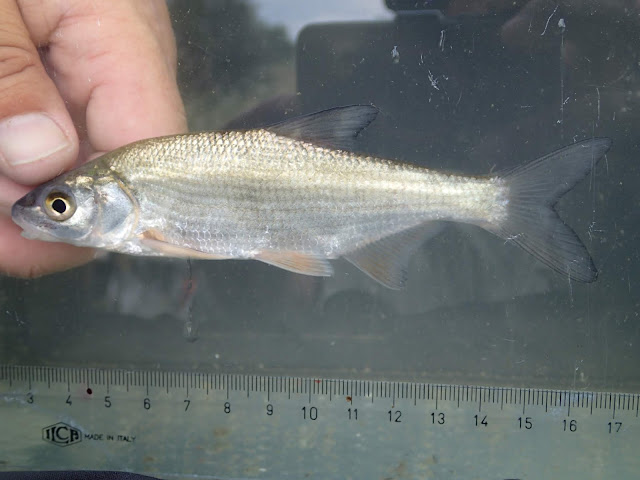 |
| Mega River: Vimba melanops. |
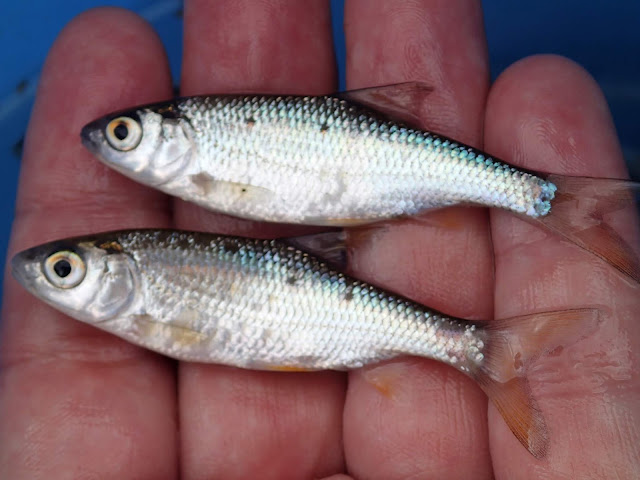 |
| Mega River: Rutilus rutilus. |
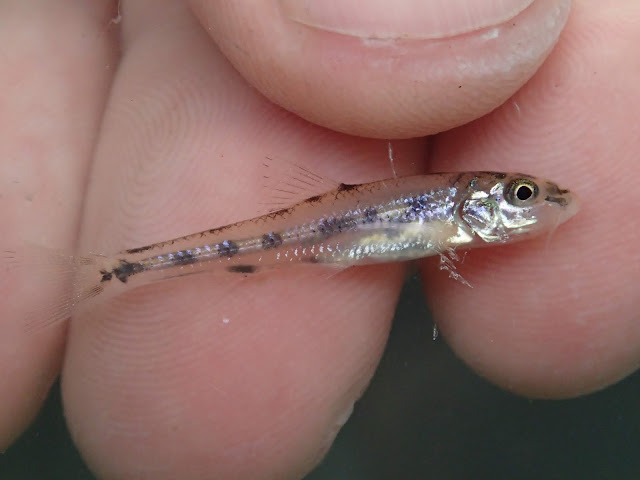 |
| Mega River: we assume Romanogobio elimeius (but at this size, difficult to be sure). |
 |
| Mega River: Pachychilon macedonicum. Note variation in colouring among individuals (this one is recently dead - 5 mins dead). |
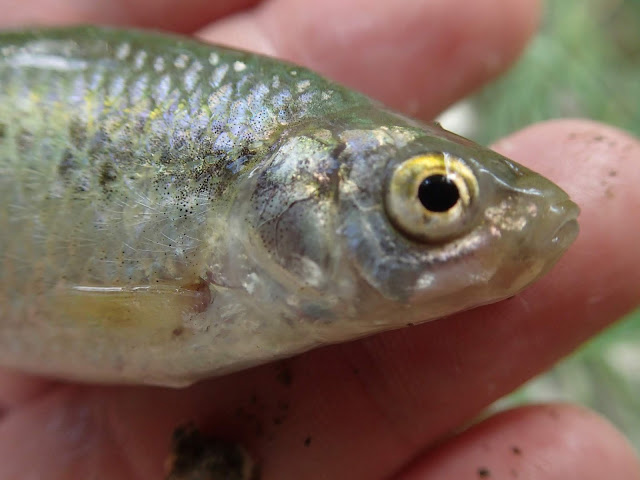 |
| Pinios River:Pachychilon macedonicum (recently dead). |
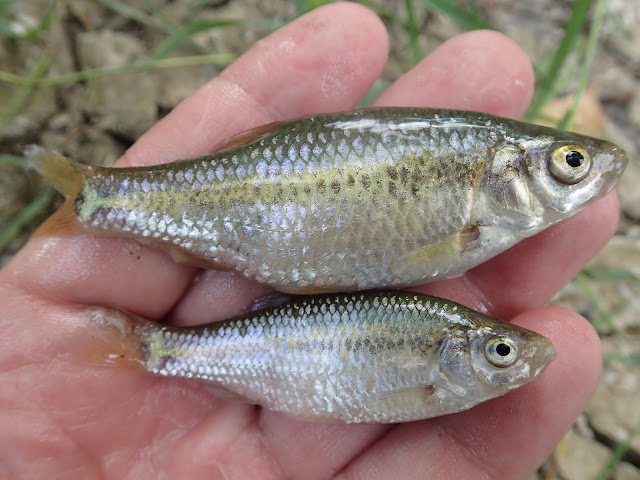 |
| Pinios River: Pachychilon macedonicum (recently dead). |
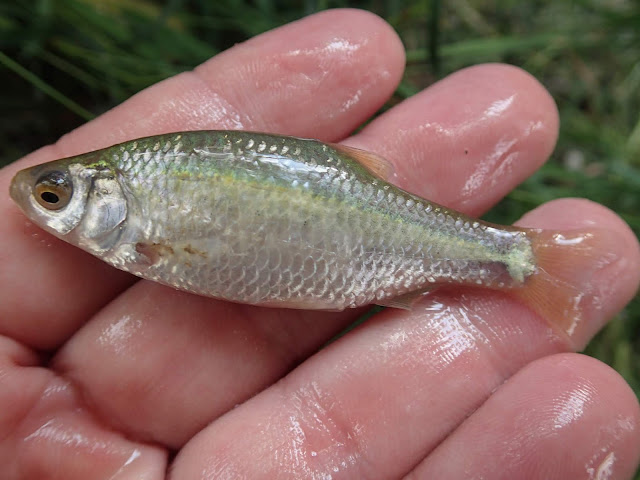 |
| Pinios River: Pachychilon macedonicum (same individual as above, alive). |
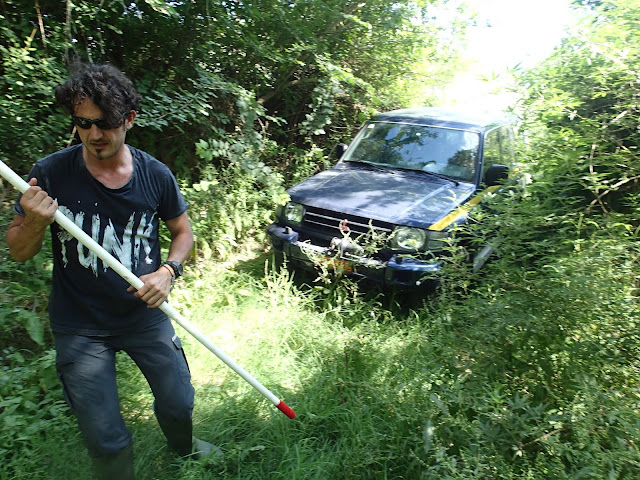 |
| Pinios River: Its not at all easy for two jeeps to find a place to launch the skiff. |
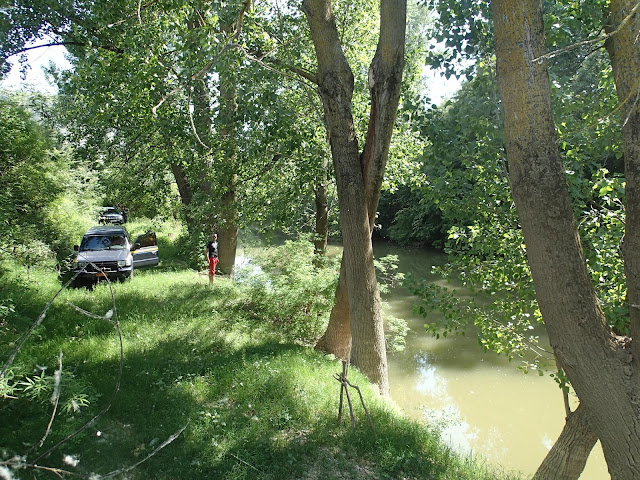 |
| Pinios River: Place to launch a skiff, Enipeas river near its confluence with the Pinios. |
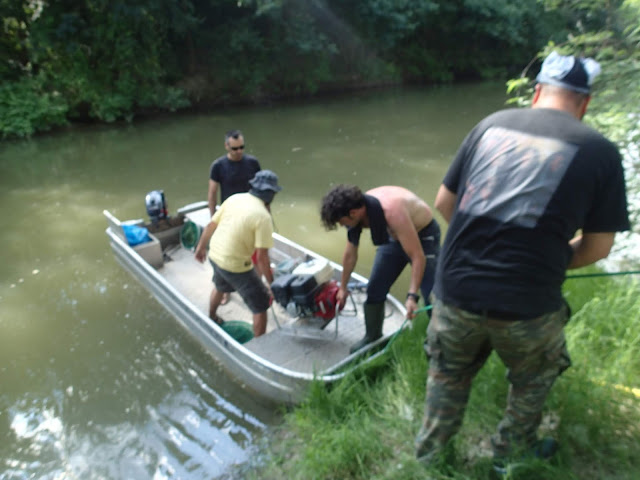 |
| Pinios River: Place to launch a skiff, Enipeas river near its confluence with the Pinios. |
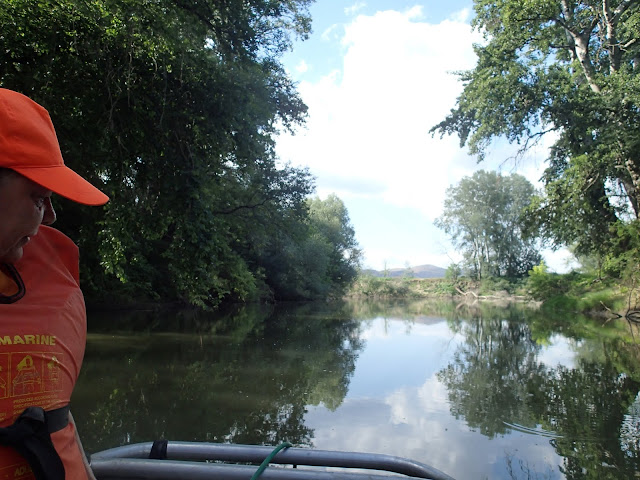 |
| Pinios River: Place to launch a skiff, Enipeas river near its confluence with the Pinios. |
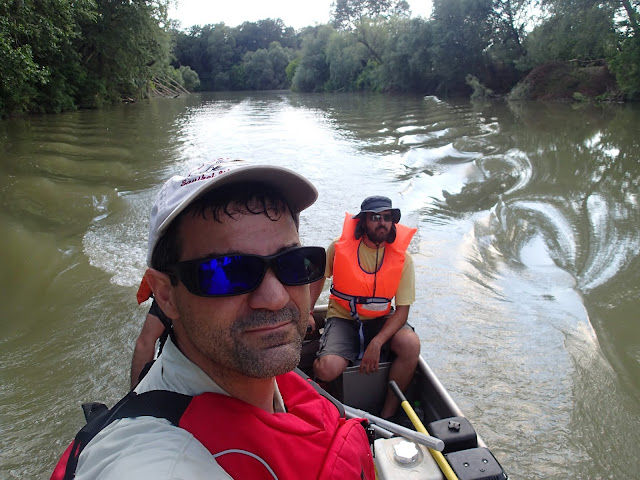 |
| Pinios River: Yours truly with newly contracted ichthyologist Alexander Ntakis, a man with a smooth hand at the motor and all-around long experience at seamanship. |
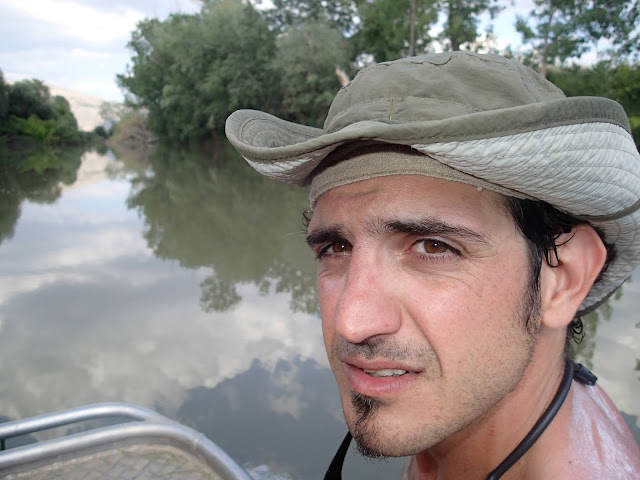 |
| Pinios River: Dimitris Kommatas, captain, maybe pirate too. |
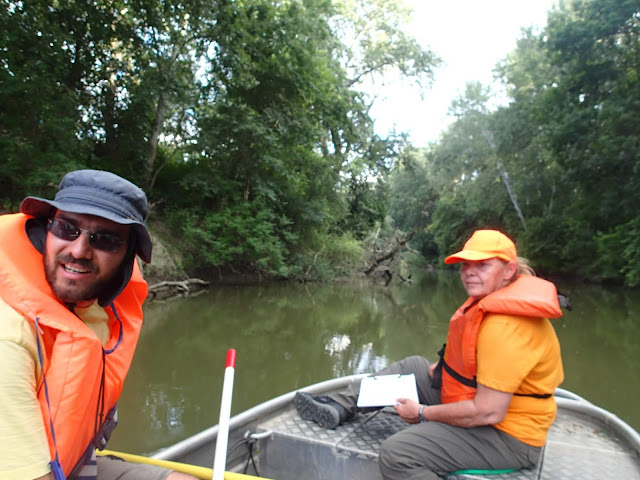 |
| Pinios River: Alexander Ntakis with Roberta Barbieri. |
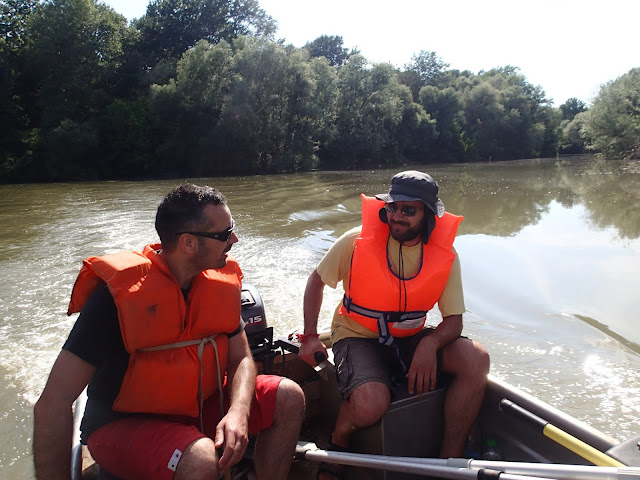 |
| Pinios River: Nektarios Kalaitzakis with Alex. |
 |
| Pinios River |
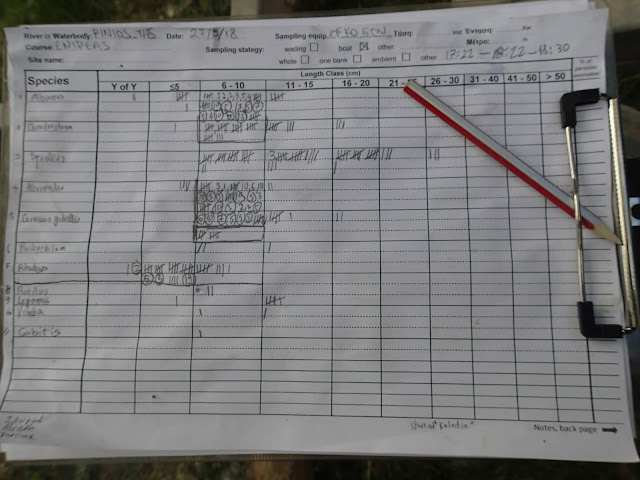 |
| Pinios River: 11 species- but during spring flow very difficult to get a good representative composition. |
 |
| Pinios River: Lepomis gibbosus (trust me they are very tasty). |
 |
| Pinios River: boat back in order after a really long haul. |
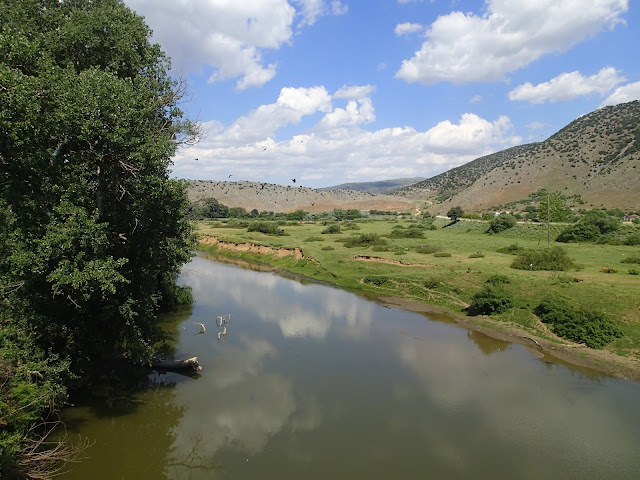 |
| Enipeas river near the confluence, near the village of Keramidi. One of the nicest places on the Pinios valley. |